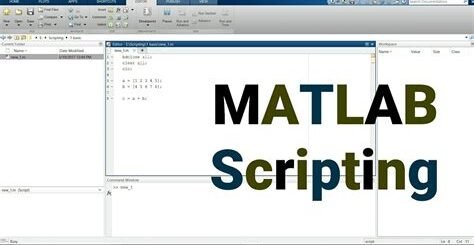Creating Simulink Simulations for Control Systems
Are you interested in creating Simulink simulations for control systems but don’t know where to start? Look no further! In this blog post, we will guide you through the process of understanding Simulink simulation environments, building models for control systems, defining and configuring control system parameters, implementing control algorithms, and analyzing and optimizing Simulink simulations. Whether you are a beginner or an experienced user, this comprehensive guide will provide you with the knowledge and skills needed to effectively utilize Simulink for control system simulations. By the end of this post, you will be equipped with the necessary tools to confidently design and analyze Simulink simulations for control systems. So, let’s dive in and explore the world of Simulink simulations for control systems together!
Understanding Simulink Simulation Environments
Simulink is a powerful simulation environment that allows engineers to model, simulate, and analyze dynamic systems. It provides a graphical editor and customizable block libraries for building models of control systems, signal processing, communications, and other systems.
Simulink simulation environments enable engineers to visually design and simulate complex systems, allowing for efficient testing and validation of control algorithms before implementation. This helps in understanding how a system will behave under different conditions and provides insights for optimizing system performance.
Understanding the Simulink simulation environment involves grasping concepts such as model hierarchy, simulation settings, and model referencing. Engineers can configure simulation parameters, such as solver options and initial conditions, to accurately represent the behavior of the system being modeled.
By using Simulink to understand simulation environments, engineers can gain valuable insights into system dynamics and behavior, leading to improved design decisions and more efficient development processes.
Building Simulink Models for Control Systems
Building Simulink models for control systems is an essential part of the design and implementation process. These models allow engineers to represent the behavior of the control system, analyze its performance, and simulate its response to different input signals. To build a Simulink model, engineers first need to define the system’s dynamics, select appropriate blocks to represent the system components, and connect these blocks to form the overall model structure.
Once the basic structure is defined, engineers can then configure the parameters of the control system. This involves setting the initial conditions, defining the input signals, and specifying the desired performance criteria. Engineers also need to consider the environmental conditions under which the model will operate, as these factors can impact the system’s behavior.
After configuring the parameters, engineers can start implementing the control algorithms within the Simulink model. This step involves selecting the appropriate algorithm for the given control objectives, tuning the algorithm parameters for optimal performance, and verifying the algorithm’s stability and robustness through simulation.
Finally, engineers need to analyze and optimize the Simulink simulation to ensure that the control system meets the desired performance criteria. This may involve running multiple simulations with different parameters, conducting sensitivity analyses, and fine-tuning the system to achieve the best possible performance.
Defining and Configuring Control System Parameters
Defining and configuring control system parameters is a crucial step in the process of designing a control system using Simulink. With Simulink, control system parameters such as gain, time constant, and input/output limits can be easily defined and configured to meet the specific requirements of the system.
When defining control system parameters, it is important to take into consideration the dynamic behavior of the system and the desired control objectives. This involves carefully choosing the appropriate parameters to achieve stability, responsiveness, and robustness in the system.
Configuring control system parameters involves fine-tuning the values to optimize the performance of the control system. This may require iterative testing and simulation to assess the impact of different parameter values on the system’s behavior.
Overall, the process of defining and configuring control system parameters in Simulink is a fundamental aspect of control system design, allowing engineers to tailor the control system to meet the specific needs and constraints of the targeted application.
Implementing Control Algorithms in Simulink
When it comes to implementing control algorithms in Simulink, it’s important to understand the various steps involved in the process. First and foremost, it’s crucial to have a clear understanding of the control algorithm that needs to be implemented. This could be a PID controller, a state-space controller, or any other type of control algorithm.
Once the control algorithm is defined, the next step is to build the Simulink model that will be used to implement the control algorithm. This involves creating the appropriate blocks and connections to reflect the control system being implemented.
After the Simulink model has been built, the next step is to configure the control system parameters. This includes setting the initial conditions, specifying the system inputs and outputs, and defining any other relevant parameters.
Finally, the last step in the process is to actually implement the control algorithm in the Simulink model. This typically involves using Simulink blocks such as Transfer Function, State-Space, or PID Controller blocks to represent the control algorithm within the model.
Analyzing and Optimizing Simulink Simulations
When it comes to analyzing and optimizing Simulink simulations, there are several key steps to keep in mind. One of the first things to consider is the overall performance of the simulation. This includes factors such as simulation speed, memory usage, and overall efficiency. By analyzing these performance metrics, engineers can identify potential bottlenecks or areas for improvement in the simulation.
Once the performance of the simulation has been assessed, the next step is to focus on optimizing it. This can involve a variety of techniques, such as refining the model architecture, optimizing parameter settings, or even using parallel computing to speed up the simulation process. By optimizing the simulation, engineers can ensure that it runs as efficiently as possible, saving time and resources in the process.
Another important aspect of analyzing and optimizing Simulink simulations is the validation process. This involves comparing the simulation results with real-world data or established models to ensure that the simulation is accurate and reliable. By carefully analyzing the simulation results and optimizing them based on validation feedback, engineers can build confidence in the accuracy of their simulations.
In conclusion, analyzing and optimizing Simulink simulations is a crucial part of the design and development process for control systems. By carefully assessing performance, optimizing the simulation, and validating the results, engineers can ensure that their simulations are accurate, efficient, and reliable.


